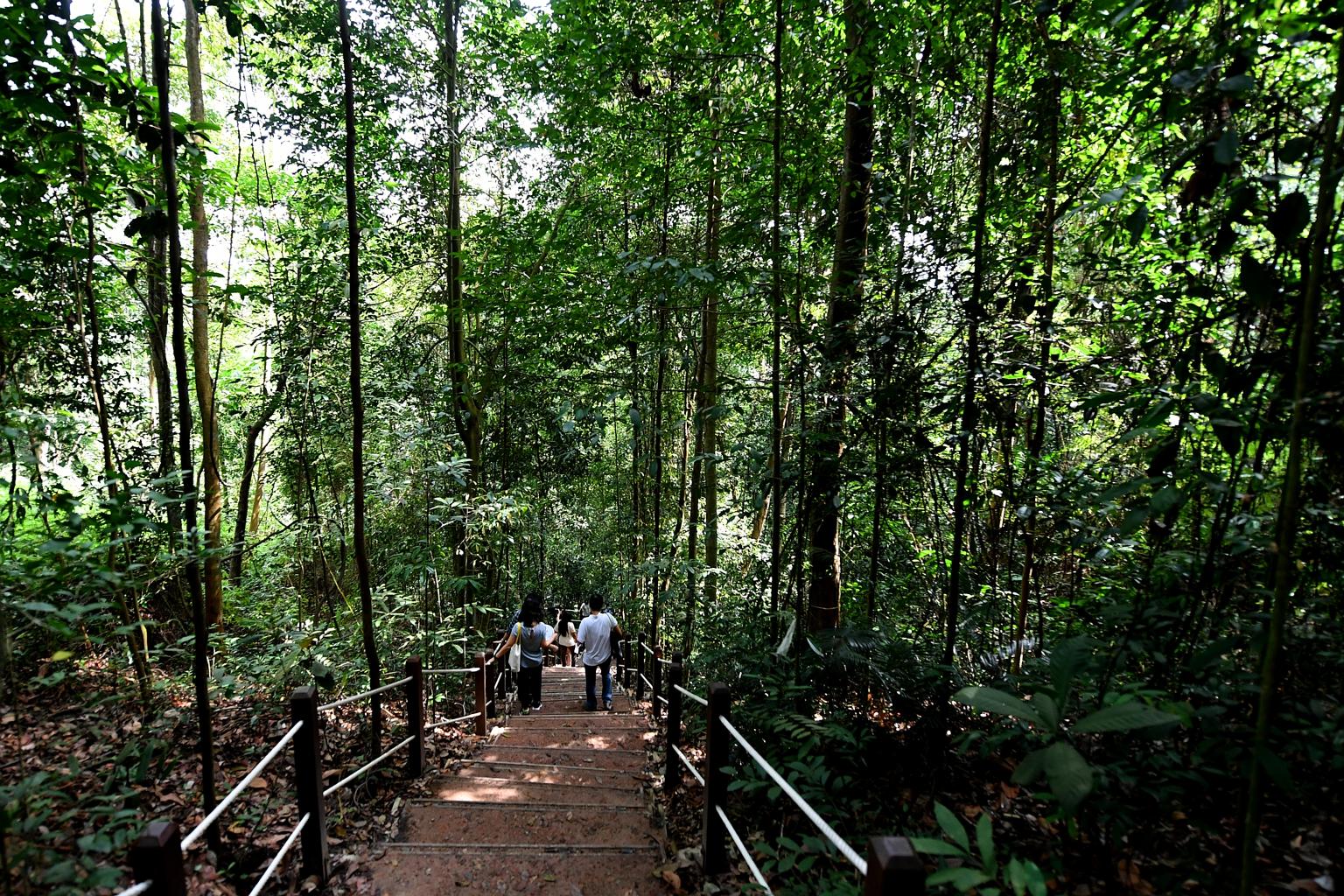Bukit Timah reserve reopens after $14m revamp
Non-slip hiking trails, boardwalks part of makeover that better protects flora, fauna
Sign up now: Get ST's newsletters delivered to your inbox

Hiking trails now have a non-slip, erosion-resistant surface that makes them easier to walk on and allows rainwater to seep through to the roots, while rope handrails help visitors negotiate steeper slopes and prevent them from straying
. ST PHOTO: JAMIE KOH
Lin Yangchen
Follow topic:
After a two-year reconstruction that cost $14.25 million, the Bukit Timah Nature Reserve (BTNR) is open daily again - this time offering a better experience to the public and more protection for the plants and animals there.
Hiking trails have a non-slip, erosion-resistant surface that makes them easier to walk on, but also allows rainwater to seep through to the roots beneath. Boardwalks now straddle swampy areas, so visitors no longer have to go off-path and disturb the flora and fauna.
Rope handrails have also been installed to help people negotiate steeper slopes and prevent them from straying off the path. Weak slopes have been reinforced to ensure that they do not give way .
The visitor centre in Hindhede Drive also has a new exhibition about the 163ha reserve, ranked as an Asean Heritage Park known for its exceptional biodiversity.
But its popularity, which has seen annual visitorship increase from fewer than 100,000 in 1990 to 400,000 prior to its closure in 2014, has led to erosion and habitat degradation from years of heavy use.
Wildlife consultant Subaraj Rajathurai said studies showed it "needed a break", and that the deteriorating trails had become a safety risk.
He added: "Since the 1990s, we've been trying to close the reserve, but it took about 20 years because the reserve was so popular."
Added Mr Joseph Koh, chairman of the Nature Reserves Scientific Advisory Committee: "This closure was very important in rehabilitating the reserve.
"If we had allowed the status quo to continue, it would have degenerated not just as a refuge for wildlife, but also in recreational value."
Where possible, slopes have been allowed to recover naturally through the accumulation of leaf litter and natural regrowth.
The recovery process is helped along in other places by planting saplings of native species salvaged from other parts of the reserve.
In April, some sections of the reserve were opened again, but only for the weekends. With its complete reopening yesterday, National Parks Board's director of Central Nature Reserve Sharon Chan urged visitors to be more mindful about staying on trails.
Minister for National Development Lawrence Wong, who marked the occasion by inserting a wooden block to complete a wall-mounted wooden map of the reserve, said everyone has a part to play in maintaining the reserve, which was established in 1883.
"Just as we enjoy the reserve today, we must make sure that we protect it... for future generations of Singaporeans to enjoy," he said.
A two-year biodiversity survey of the reserve is also under way.
The data will help the authorities conserve the flora and fauna.
A new community group called Friends of Bukit Timah Nature Reserve has also been set up for the public to share ideas. Anyone - nature lovers, residents and even organisations - can join.
Mr Subaraj, stressing the need to preserve the reserve, likened it to the iconic Raffles Hotel, known as the grand old dame of Singapore.
Pointing to the reserve, he said: "This is the grand old lady of biodiversity."
SEE HOME

